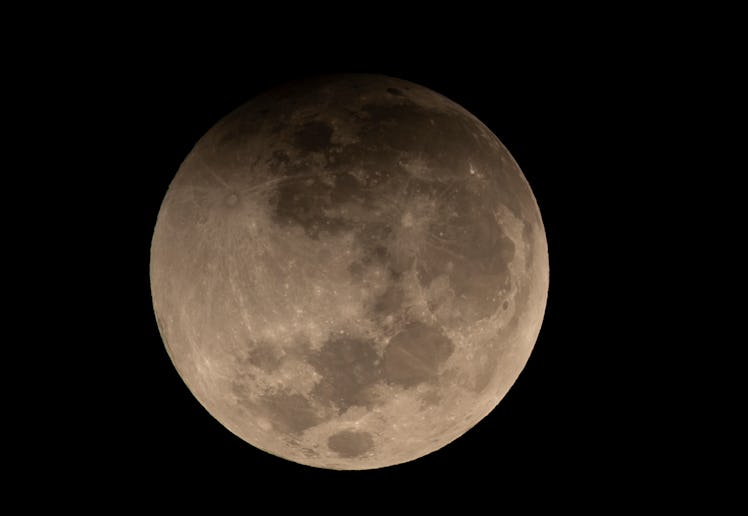May’s Full Flower Moon Will Feature An Elusive Penumbral Eclipse
Only some lucky Earthlings will get to see this eclipse.

The Full Moon in May will be here in just a few short days — gracing our skies on May 5 — but there’s something extra special about the full moon this month. In addition to the May Flower Moon, marking the final month of spring, we’re going to have a penumbral lunar eclipse, too. Not sure what that means? Here’s what you need to know about the Flower Moon, the penumbral eclipse, and if you’ll be able to see it at all.
What is a penumbral lunar eclipse?
“A penumbral lunar eclipse takes place when the Moon moves through the faint, outer part of Earth's shadow, the penumbra,” TimeandDate explains.
When the Earth passes through the inner shadow of the Moon (the umbra), that’s when we see a partial or a total lunar eclipse, the site explains.
“Sometimes, in around one out of three lunar eclipses, the Moon doesn’t reach the umbra: the penumbral stage is as deep as the eclipse gets. These events are called penumbral eclipses.”
What does a penumbral lunar eclipse look like?
Instead of the Moon having a “bite” out of it or going completely black, which happens in partial and full eclipses, only people who are looking very closely at the Moon will notice the penumbral lunar eclipse.
“The eclipse never progresses to reach the dramatic minutes of totality,” EarthSky notes. “And at best, at mid-eclipse, very observant people will notice a dark shading on the moon’s face. Others will look and notice nothing at all.”
When is May’s penumbral lunar eclipse?
If you want to check out the penumbral lunar eclipse, you won’t be able to see it in the U.S. or Canada, because it’ll happen when the moon is below our horizon.
However, “people in eastern Europe, the Middle East, Africa, Asia, Australia, New Zealand, Antarctica, the South Atlantic Ocean, the Indian Ocean, and the Pacific Ocean will see a deep penumbral lunar eclipse during the night of May 5-6, 2023,” EarthSky explains.
Unfortunately, TimeandDate won’t be streaming the penumbral lunar eclipse, but EarthSky has a few images if you’re curious about what a penumbral lunar eclipse looks like.